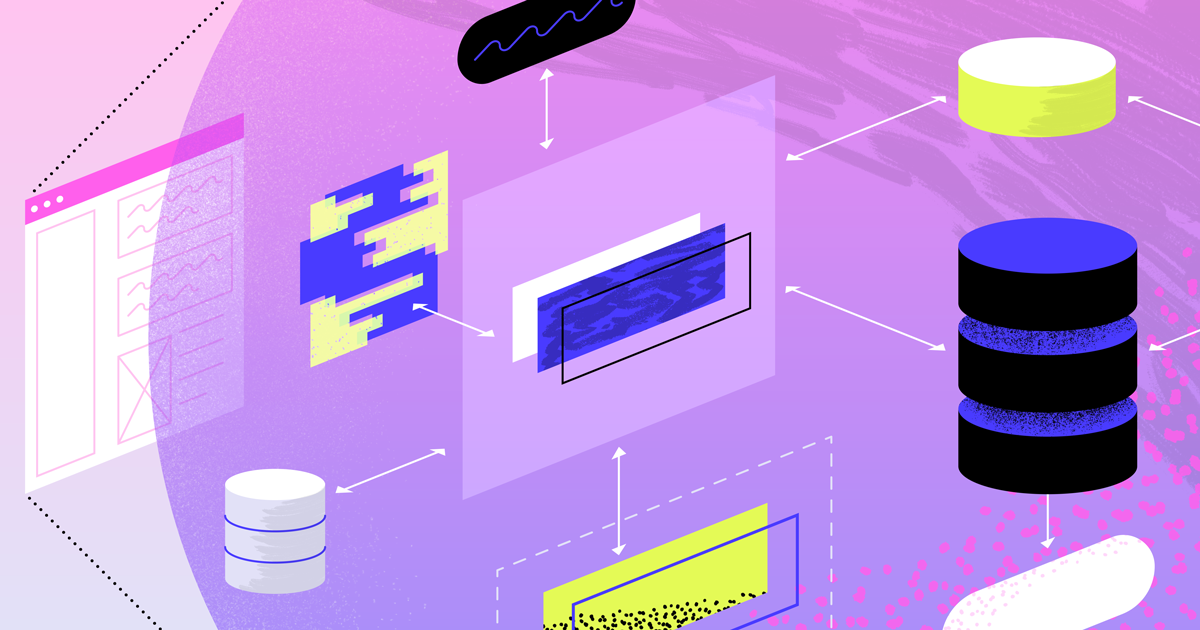User Testing: Secret Weapon for No-code Apps
.webp)
Picture this: you've built the ultimate app – brilliantly designed, packed with features, and set to transform its industry. But users feel frustrated, confused, and uninterested when you finally launch.
What went wrong?
The answer lies in skipping a crucial step: user testing.
In this article, we'll dive into the importance of user testing for creating successful no-code apps, its benefits, best practices, prevalent mistakes, and why delaying user testing is a recipe for disaster.
What is User Testing?
User testing is a process that allows you to consider a product or service by testing it with potential users.
User testing aims to learn the user's experience with the product, identify any issues they might encounter, and see how you can resolve them. It provides direct feedback on how real users use the system.
Why User Testing is Key to Building a Successful No-code App
User testing is similar to proofreading a novel.
Just as an author cannot rely on their reading to catch every typo or plot inconsistency, an app developer cannot solely depend on their perspective to ensure a seamless user experience.
It is especially true in the no-code realm. Anyone unfamiliar with the best app development practices can sometimes build a product with overlooked usability hiccups.
According to Gartner, by 2024, low-code and no-code application development will be more than 65% of application development activity. With this surge, the role of user testing becomes even more pivotal.

But why exactly is user testing so crucial in no-code app development?
To put it into perspective, imagine crafting a puzzle without checking if the pieces fit together correctly. You may believe you've designed a beautiful puzzle, but you can only be sure the pieces will align as intended with testing.
Similarly, building a no-code app without user testing could result in a disjointed user experience, despite having an aesthetically pleasing design or a promising concept.
Related: Building with Bubble
How User Testing Helps You Build an App That Meets User Needs
In 2022, a survey conducted by Forrester Research found around 70% of projects fail due to a lack of user testing.
So, how does user testing help you build an app that meets user needs?
- Identifying Pain Points: User testing helps uncover the areas in your app that may cause frustration or confusion. It's like a flashlight shining on the areas you might overlook but can make a world of difference to the user experience.
- Enhancing Usability: User testing can highlight whether your app's navigation is intuitive or your content easily understandable. It's similar to test-driving a car before buying it - you want to ensure it runs smoothly.
- PrioritisingPrioritising Features: Only some features will resonate with your users. User testing can help you understand which features are valuable to your users.
- Improving User Satisfaction: An app that meets user needs leads to higher user satisfaction, resulting in more positive reviews, higher retention rates, and increased word-of-mouth referrals.
Imagine you're a chef preparing a new dish. You can use fresh ingredients and a new recipe, but if you don't taste the food regularly, how will you know if it's good?
Related: Learn how Canva used user testing to improve their product
Similarly, user testing is the taste test of your no-code app development process, allowing you to refine the 'flavour' to meet your users' preferences.
No-code platforms empower anyone to create apps, but user testing ensures they deliver value to their intended audience.
By understanding and incorporating user feedback, you can build an app that functions optimally and truly resonates with your users.
Why People Avoid User Testing
User testing is often overlooked or underutilised in app development despite its undeniable benefits.
There's a common misconception that user testing is a luxury, a time-consuming or costly process that only large corporations can afford.
However, this mindset needs to be revised and can also harm the success of your no-code app.
So, why do people avoid user testing, and what are the potential repercussions?
- Fear of Criticism: Some people may shy away from user testing, fearing it could expose flaws in their thinking. However, this reluctance can prevent them from identifying issues.
- Perceived Cost and Time Constraints: People may view user testing as an expensive, time-consuming process. In reality, there are various cost-effective and efficient testing methods available.
- Overconfidence in Design and Functionality: Developers, especially those new to no-code platforms, might assume their app is already user-friendly and doesn't need testing. However, even the most well-intentioned design can fall short when faced with real-world user interactions.
- Lack of Awareness: Some developers may be unaware of the importance of user testing or unsure of how to conduct it. This knowledge gap can lead to missed opportunities for improvement.
- Misjudgment of User Needs: Sometimes, they believe they know what their users want. They rely on their intuition instead of actual user data. It can lead to discrepancies between the app's design and functionality and users' needs and preferences.
- Lack of User Testing Skills: User testing is a skill that requires understanding and practice. Some people don't do it because they don't know how or feel they don't have time to learn.
- Pressure to Launch Quickly: In the race to beat others, people may rush the development process, considering user testing a dispensable step to hurry the launch.
- Neglecting Long-term Benefits: Creators might consider user testing an unnecessary expense that doesn't offer immediate returns, overlooking the long-term benefits.
Early, Frequent User Testing: The Key to Reducing Costs
A commonly used phrase in software development is "Shift left".
It refers to addressing potential issues early in the development process, and it applies perfectly to user testing in no-code app development.
The traditional approach to testing is to introduce it towards the end of the development cycle. Late-stage testing may address symptoms of a disease rather than its root cause, similar to a doctor's approach.
Related: How Burberry Improved their app experience
It's reactive, not proactive, and can lead to costly and time-consuming fixes.
So, what's the price of postponing user testing, and why should you test early and often?
- Expensive Revisions: Changes to an app become increasingly expensive the further you are in the development process. Early user testing can identify potential design and usability issues before you've invested significant time and resources into building the app.
- Delayed Time to Market: Discovering major usability issues late in the game can lead to significant delays in launching your app. Time is of the essence.
- Lost Users: If users encounter too many issues with your app, they may abandon it before you can implement improvements. These early users are often your most engaged audience; losing them can be a significant setback.
- Damage to Brand Reputation: Launching an app with significant usability issues can tarnish your brand's reputation. User reviews and word-of-mouth referrals are crucial and negative experiences can quickly spread.
Like weeding a garden, addressing issues early often prevents them from taking root and becoming harder to remove later.
Remember, user testing isn't a one-and-done activity—it's an ongoing process that you should adopt from the inception of your app idea to its post-launch iterations.
Conducting User Testing: 7 Steps
Now that we've established the importance of user testing and the risks of overlooking it, the next step is to delve into the practical aspect - how do you prepare for user testing?
Preparing for user testing is like planning a journey. You need to know your destination, path, and what you hope to discover.
- Define Your Testing Ground. Start by identifying which aspects of your product or website you want to test. Do you wonder how users will navigate a particular feature or what they'll do first when they hit your product page? Reflect on your product's strengths, weaknesses, and potential areas of enhancement.
- Choose Your Participants' Tasks. The tasks assigned to your participants should mirror real-world goals they would have when interacting with your product or website, such as making a purchase.
- Establish Your Success Yardstick. After deciding what and how to test, setting clear success indicators for each task is crucial. For instance, in a usability test for HubSpot's Content Strategy tool, the success measure was the ability to add a blog post to a cluster and then explain the process. By defining success and failure benchmarks, you can assess whether your product's user experience is intuitive enough.
- Create Your Script and Dialogue. Begin with a script that outlines the study's purpose, whether there'll be a recording, some background on the product or website, questions about participants' familiarity with the product or website, and of course, their tasks. Stick to the same script for each user session.
- Hunt for Your Participants. Finding the right participants can be challenging. Experts often recommend having five participants for each study, but these participants should also reflect your existing user base. To find ideal participants, create a highly detailed persona and entice them with rewards like gift cards. Consider recruiting colleagues from other departments who might use your product. However, ensure there's no personal relationship between team members and participants to avoid bias in your study.
- Roll Out the Study. The study asks participants to tackle one task at a time without assistance. If a participant is stuck, resist the urge to help. Observing how users navigate your interface on their own is critical. Encourage participants to "think out loud". It lets you peek into a user's thought process as they interact with your product or website.
- Dive into Your Data. AnalysingAnalysing the data collected from the study can identify issues, assess the severity of problems, and offer design suggestions to the engineering team.
While analysing, remember to consider both the users' performance and feelings about the product. A user can achieve the goal swiftly yet harbour negative feelings about the experience.
Once you've gathered insights from your data, summarise the key findings and chalk out the next steps for enhancing your product or website's design. Also, specify the improvements you hope to observe in the subsequent round of testing.
Measuring User Testing Success
After completing your user testing, it's time to evaluate the results.
There are no hard and fast rules, but there are guide rails you can use to measure the results.
- Completion Rates: A measure of the percentage of users who complete a task without assistance. Low rates suggest usability issues.
- Error Rates: Monitor the errors users make. High error rates could signal the need for improved design or more precise instructions.
- Task Completion Time: This indicates how long users take to complete a task. Longer times could point to usability challenges.
- Learnability: Gauge how quickly users learn to use your app effectively, tracking improvements over several tasks or sessions.
- User Satisfaction: Post-testing, ask the users to rate their satisfaction to gauge the overall user experience.
- System Usability Scale (SUS): A way to measure the usability of your app and track improvements over time.
Common User Testing Mistakes
Even the best-laid plans can go astray without a keen eye for common pitfalls in user testing.
- Inappropriate Test Users: Always ensure your test users accurately represent your target audience. This alignment is crucial for meaningful insights.
- Leading Questions: Avoid biasing your users with leading questions. Use open-ended questions to collect unbiased and honest feedback.
- Overlooking Qualitative Data: Pay attention to the value of qualitative feedback. While numbers are important, users' thoughts and feelings can offer rich, invaluable insights.
- Overemphasis on Negatives: RecogniseRecognise what's working well in your app and what's not. Knowing what users love can guide you in enhancing those successful elements.
- Infrequent Testing: User testing should be iterative and ongoing. Each new version of your app should undergo testing for continual improvement.
- Ignoring Feedback: User testing is only possible with action. Ensure you have a system to analyse, prioritise, and implement the feedback you collect.
Wrapping up
User testing is the compass guiding your no-code app development journey, ensuring you stay on course and reach your destination: a successful, user-friendly app.
We've explored why user testing is critical—it helps you create an app that genuinely meets user needs. Despite its importance, some developers skip user testing due to misconceptions or lack of understanding, often leading to apps that fall short of user expectations.
Adopting user testing early and often is important to avoid these pitfalls, and so is preparing for it.
However, avoid common mistakes that could skew your results and rob you of valuable insights.
By keeping your users at the heart of your development process, you can build a no-code app that achieves your goals and delivers a satisfying, seamless experience for your users.
Want software that moves the needle?
We’ve helped ops teams, marketing leads, and SaaS founders build software that scales.





